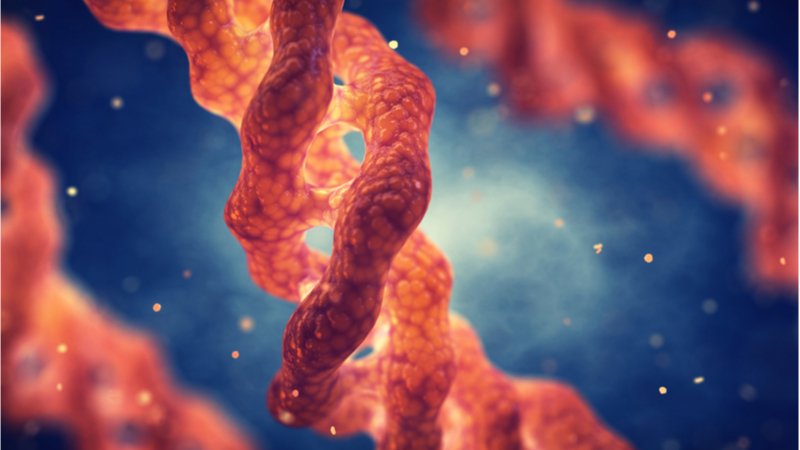Posted 28 July 2021 - 01:10 PM
Molecular Psychiatry has recently published a report from the University of Cambridge detailing how the brain’s extracellular matrix (ECM) changes with age, negatively impacting memory, and how modifying the components of the brain ECM can revitalize memory in mice [1].
What is neuroplasticity?
Neuroplasticity is the ability of neurons to form new connections. This ability is critical to learning and memory, as our experiences are stored in our neural networks. It is also an ability that declines with age, making it increasingly harder for older people to form new memories and learn new skills. Restoring neuroplasticity has long been a goal of aging research.
What are perineuronal nets?
Perineuronal nets (PNNs) are part of the extracellular matrix around some neurons, covering their bodies and synapses. Animal studies have shown that these nets can both inhibit and promote neuroplasticity, depending on the composition of their chondroitin sulphate glycosaminoglycan chains (CS-GAGs). Previous research has identified the two possible CS-GAGs: chondrotin 6-sulphates (C6S), which permit neuroplasticity, and chondrotin 4-sulphates (C4S), which inhibit it [2]. These two chains are nearly identical except with different patterns of sulphation.
In baby mice, 18% of the CS-GAGs are C6S; this drops to 4% during development, and aged mice have less than 1% of their CS-GAGs as C6S [3]. As expected, this is associated with a significant loss in learning and memorization ability.
Targeting the C6S and C4S chains to address memory decline
To determine if these two chains might be an effective point of intervention for the aging brain, the researchers aged wild-type and genetically modified mice and utilized three memory-related behavioral tests. Broad enzyme-facilitated degradation of C6S and C4S in the brain, not specific to the perineuronal nets, improved memory in aged mice. Untethering of C6S and C4S from the perinueronal nets (without degradation) also prevented memory decline in aged, genetically modified mice.
Because the inhibitory C4S is much more prevalent in aged brains, blocking the action of both chains improved memory, even though C6S has been shown to improve plasticity in previous studies [2].
Next, the authors looked specifically to C6S. Mice in which the gene chst3 (which increases C6S levels) was deleted showed memory impairments at an earlier age. Meanwhile, aged mice injected with a virus to locally overexpress chst3 experienced restored memory. Mice genetically modified to overexpress chst3 throughout their bodies further prevented this loss of memory in the first place. The authors conclude that not only does C4S inhibit the formation of new neuronal connections, C6S promotes the formation of new memories.
Overall the results of this study demonstrate a mechanism for the loss of memory in the aged brain and indicate that treatments targeting PNNs have the potential to ameliorate memory deficits associated with ageing.
Conclusion
Cognitive decline with aging is among the harshest detriments to quality of life in our later years. An anti-aging therapeutic (or combination treatment) that slows, halts, or reverses memory loss would be incredibly beneficial to the public at large. This study used an approach that is especially rich in thereapeutic targets, including sulfotransferase enzymes, the production of hyaluronan, antibody therapies, and the maintenance of PNNs by OTX2.
Their results were also promising with naturally aged mice – a step many researchers skip by using accelerated aging models to get results faster. However, this study also relied primarily on behavioral results, which are notoriously finicky and difficult to interpret in mice and may not be representative of what is seen in humans. Clinical trials are required to see whether or not altering sulphation of the brain’s ECM can be an effective intervention.
| HELP SPREAD THE WORD |
| Please connect with us on social media, like and share our content, and help us build grass-roots support for healthy life extension: |
|
| Thank You! |
Literature
[1] Yang, S., et al. Chondroitin 6-sulphate is required for neuroplasticity and memory in ageing, Molecular Psychiatry (2021). https://doi.org/10.1...380-021-01208-9
[2] Lin, R., Rosahl, T. W., Whiting, P. J., Fawcett, J. W., & Kwok, J. C. (2011). 6-Sulphated chondroitins have a positive influence on axonal regeneration. PloS one, 6(7), e21499.
[3] Foscarin, S., Raha-Chowdhury, R., Fawcett, J. W., & Kwok, J. C. (2017). Brain ageing changes proteoglycan sulfation, rendering perineuronal nets more inhibitory. Aging (Albany NY), 9(6), 1607.
The post Memory Restored in Aged Mice by Modifying the Brain’s ECM first appeared on Lifespan.io.
View the article at lifespan.io















































